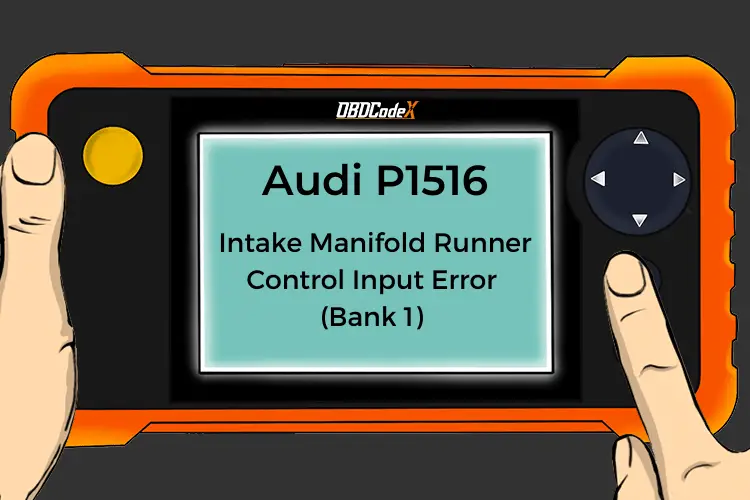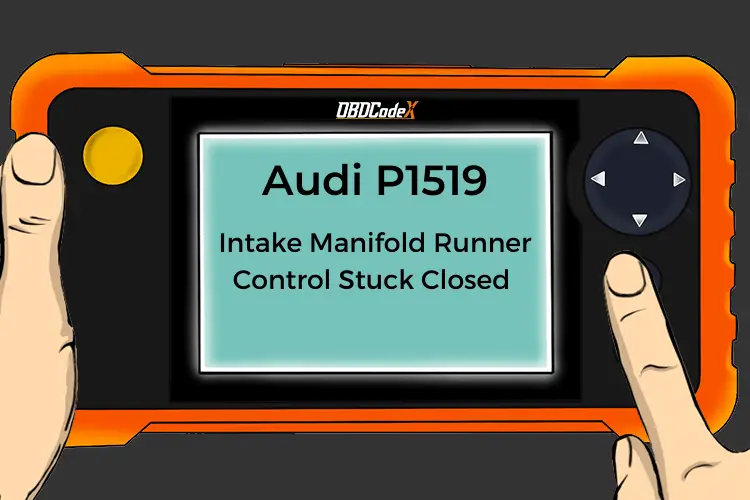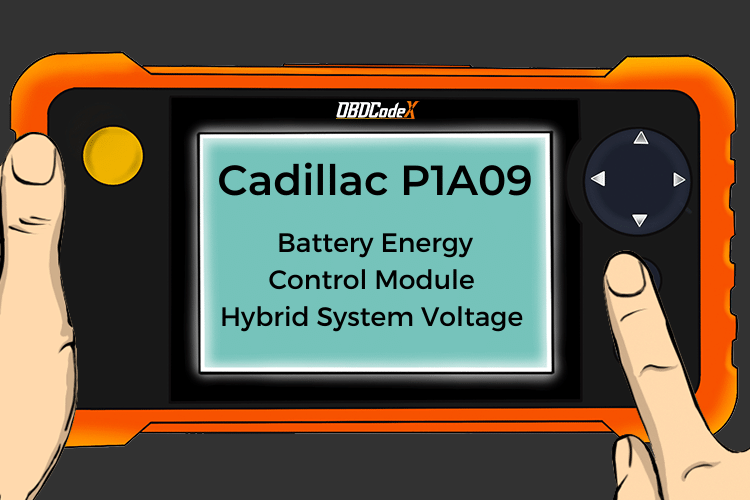P200B: Intake Manifold Runner Performance Bank 2
Is your scanner showing P200B?
No worries. We'll show you what it means and how to deal with it.
P200B: Intake Manifold Runner Performance Bank 2
OVERVIEWWhat Does The P200B Code Mean?
If your OBD II equipped vehicle has stored a code P200B, it means that the powertrain control module (PCM) has detected a problem with the intake manifold runner control (IMRC) system on bank 2. Code P200B applies explicitly to the bank of the engine that does not contain the #1 cylinder.
The IMRC system is designed to regulate and reconfigure intake air as it enters the engine. At lower engine RPM levels, airflow is restricted in order to reduce exhaust emissions. At higher engine RPM levels, a swirling effect is created by the IMRC flaps. This helps to optimize fuel atomization and maximize engine performance.
Typically, the IMRC system is composed of a series of metal flaps that are attached to a pivot rod which runs through the intake ports for each cylinder. Usually, all the flaps on one bank of the engine move in unison because they are all attached to a singular pivot rod; controlled by the same actuator. Each bank of the engine is outfitted with its own pivot rod, flaps, actuator, etc. which function independently of the other engine banks.
The PCM uses input data from numerous engine sensors to determine the desired degree at which IMRC system components should be implored. Once the PCM has applied the appropriate amount of voltage (to the correct circuit) for the desired IMRC adjustment, engine sensor data is monitored to see if the intended effect is realized.
If the PCM detects that the IMRC system cannot be controlled effectively, a code P200B will be stored and a malfunction indicator lamp may be illuminated.
What Are The Symptoms Of The P200B Code?
Symptoms of a P200B trouble code may include:
- Diminished fuel efficiency
- Reduced engine performance
- Lean or rich exhaust codes are stored
- Hesitation upon acceleration
- Stumble at idle
What Are The Potential Causes Of The P200B Code?
Causes for this code may include:
- Broken or worn IMRC linkage or bushings
- Defective IMRC actuator
- Broken or collapsed IMRC vacuum lines
- Faulty IMRC vacuum supply actuator
- Open or shorted IMRC circuits or connectors
- Bad IMRC sensor or other engine sensor/s
How Serious Is This P200B Code?
Stored IMRC codes will typically result in wide open intake port flaps. The P200A should not be classified as severe but should be addressed at the earliest convenient opportunity.
How Can You Fix The P200B Code?
If mass airflow (MAF), manifold air pressure (MAP), or intake air temperature (IAT) codes are stored, these should be addressed before attempting to diagnose the stored P200B.
Check Technical Service Bulletin
If you can locate a technical service bulletin (TSB) that matches the vehicle year, make, and model; as well as the engine size, code/s stored, and symptoms exhibited, it may yield helpful diagnostic information. A diagnostic scanner, a digital volt/ohmmeter (DVOM), a hand held vacuum pump, and a source of vehicle specific diagnostic information will be necessary to diagnose a code P200B.
Visually Inspect Of The IMRC System
I like to begin my diagnosis with a visual inspection of the IMRC system. I focus on mechanical linkage, vacuum lines and hoses, as well as electrical harnesses and connectors. Worn or damaged IMRC hardware, bushings, or linkage should be repaired or replaced before proceeding.
I would proceed by locating the vehicle diagnostic connector, plugging in the scanner, and retrieving all stored codes and pertinent freeze frame data. It’s a good idea to record this information before clearing the codes, in case the code proves to be intermittent. Once this is completed, test drive the vehicle until the PCM either enters readiness mode or the code is reset. Assume that the code is intermittent and will be much more difficult to diagnose if the PCM enters readiness mode. At this point, the conditions which contributed to the code being stored may need to worsen before an accurate diagnosis can be made.
Component testing procedures (and specifications), diagnostic flow charts, connector pin out charts, and connector face views will be necessary in completing the next step of your diagnosis.
With the key on and engine off (KOEO), use the vacuum pump to actuate the IMRC system for the engine bank in question. With vacuum pressure applied to the IMRC actuator, check to make sure that the flaps are opening upon request. If they are, observe scanner data to see if IMRC sensors (if equipped) are functioning properly. If discrepancies are detected, test the respective sensor/s using the DVOM. Suspect that sensors which fail to comply with manufacturer specifications are defective.
If all sensors and circuitry appear to be functioning as intended, and the IMRC hardware is intact, use the DVOM to test the runner control solenoid/s for the appropriate circuit. Actuator solenoids which fail to comply with manufacturer’s specifications should be considered defective.
- Suspect that the PCM has failed or is experiencing a programming error only after all other possibilities have been exhausted
Recommended Parts
Below are some recommended auto parts to help you address the trouble code affecting your vehicle and get it running smoothly again:
>>> APDTY Intake Manifold Runner Control Valve Solenoid
>>> IMRC Sensor
>>> WORKPRO 582-piece Crimp Terminals, Wire Connectors, Heat Shrink Tube, Electrical Repair Kit
>>> INNOVA 5210
>>> KAIWEETS Digital Multimeter
Note: During the purchasing process, please check carefully whether the part you want to buy fits your car!
Reference Sources
P200B Intake Manifold Runner Performance Bank 2, OBD-Codes.




